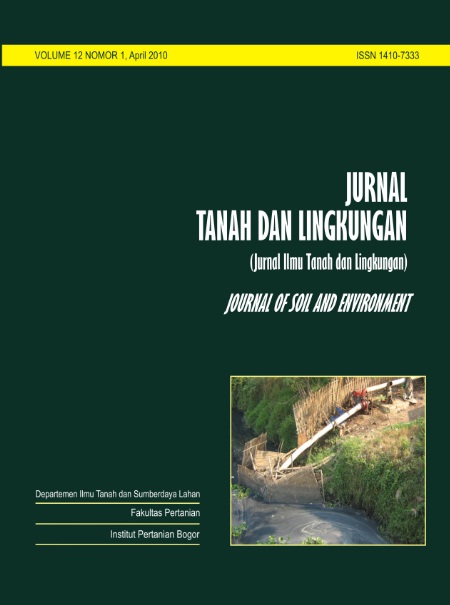KARAKTERISTIK PEDOLOGI DAN PENGELOLAAN REVEGETASI LAHAN BEKAS TAMBANG NIKEL: STUDI KASUS LAHAN BEKAS TAMBANG NIKEL POMALAA, SULAWESI TENGGARA
Abstrak
Post-mining land management needs to be done by taking into account a holistic approach concerning the improvement of physical, chemical and biological properties of soil as growth media, in order to support the rehabilitation plans. The objective of this study were: (i) to conduct quantitative and comprehensive an inventory of pedological properties of nickel post mining land, (ii) to analyze the potential and limitations of post mined land, (iii) act designed environmental management, based on the characteristics of the revegetation of the land and the environment. The results showed that the soil in Pomalaa could be classified in Typic Hapludox, clayey, mixed, isohypertermic (P1) dan Typic Hapludalfs, loamy, mixed, isohypertermic (P2), while the material in ex mining area are overburden or parent material. The soil has developed from peridotite and peridotite-serpentinite ultramafic material. This soil has low natural fertility and require efforts to improve the physical properties. Ex-mining area has a high rate of erosion. Poor tree growth in revegetation area has been determined caused by a deficiency of Ca, Fe, Cu, or Mn. The possibility of Ni and Cr toxicity in plants needs to be further investigated. Local resources in the form of slag can be used for revegetation, especially converter slag. The results obtained from this study can be used to give the advice of post-nickel mining land management, based on land characteristics. A better management advice covers two issues, namely improvements of the management action actually implemented and improvements in technical rehabilitation.
Keywords: Pedological processes, post nickel mining land, revegetation
Unduh
Departemen Ilmu Tanah dan Sumberdaya Lahan, Fakultas Pertanian, IPB University













